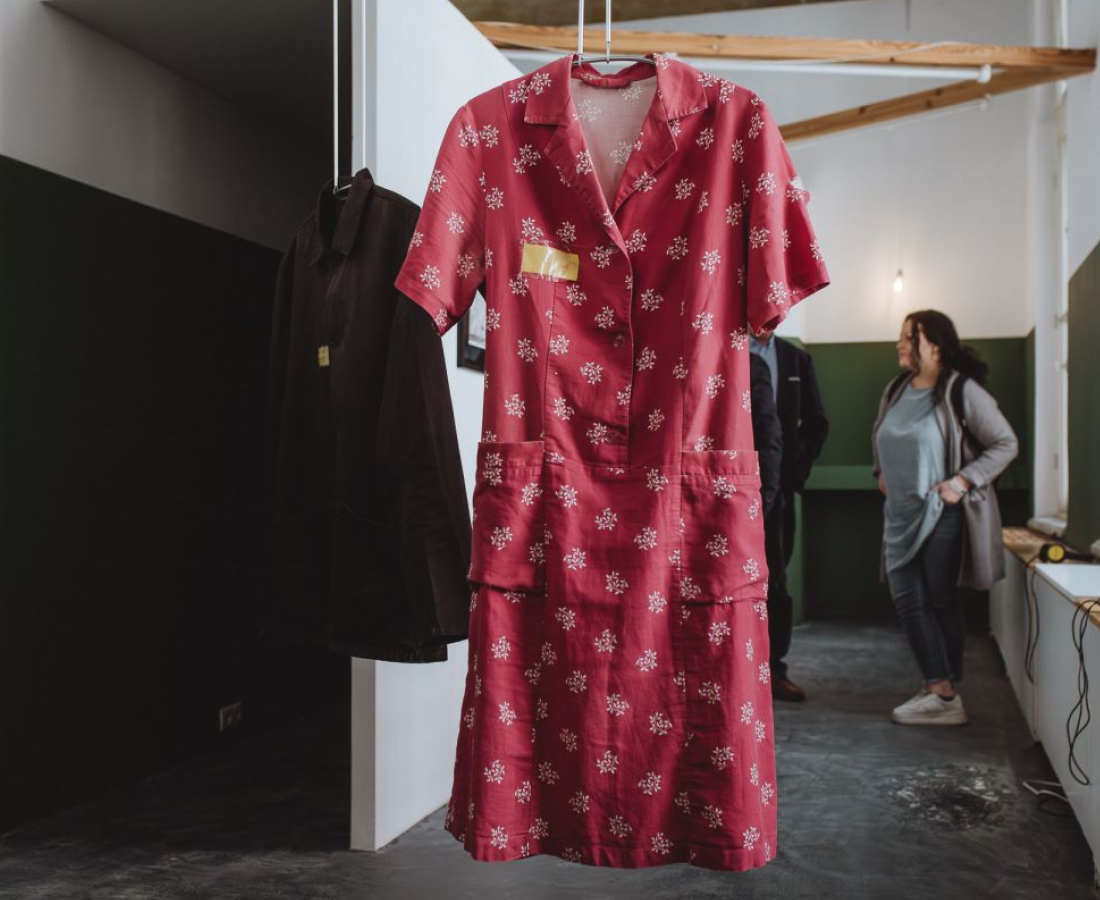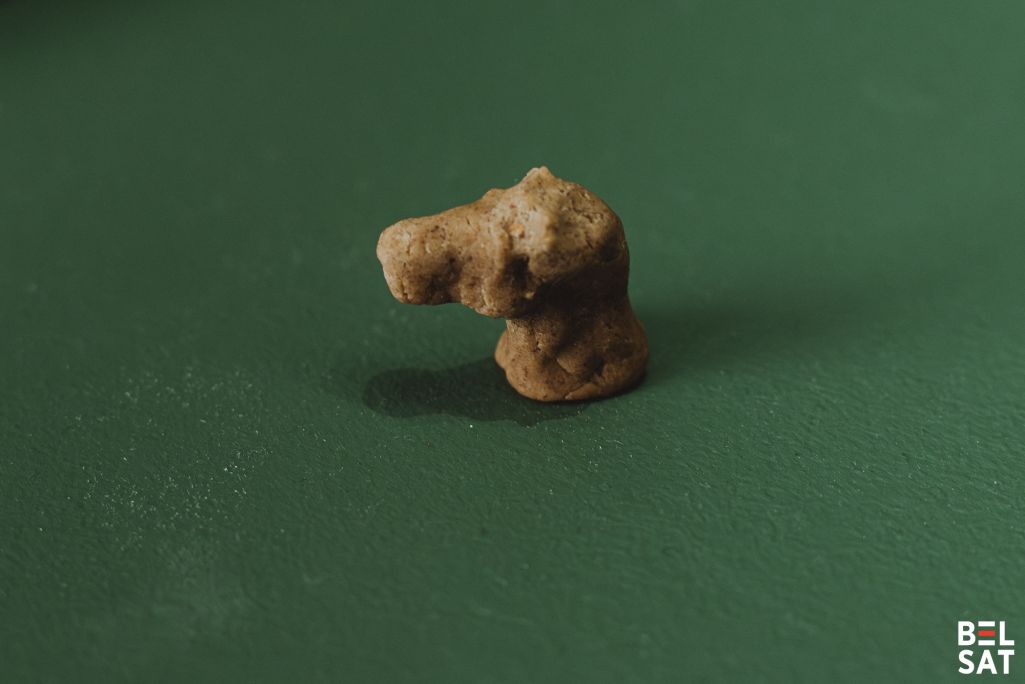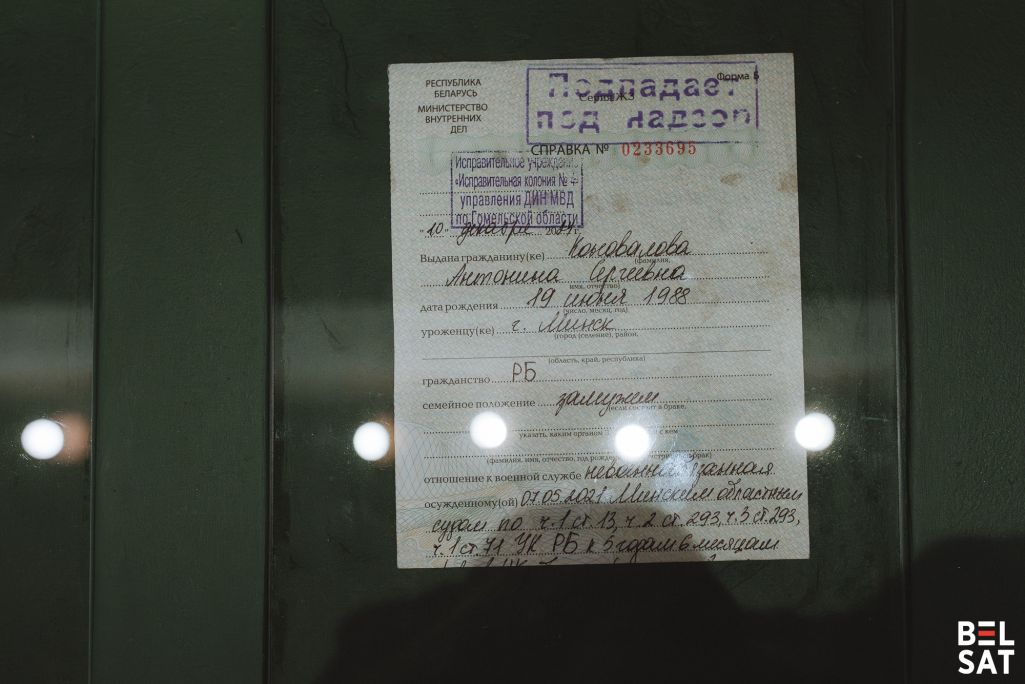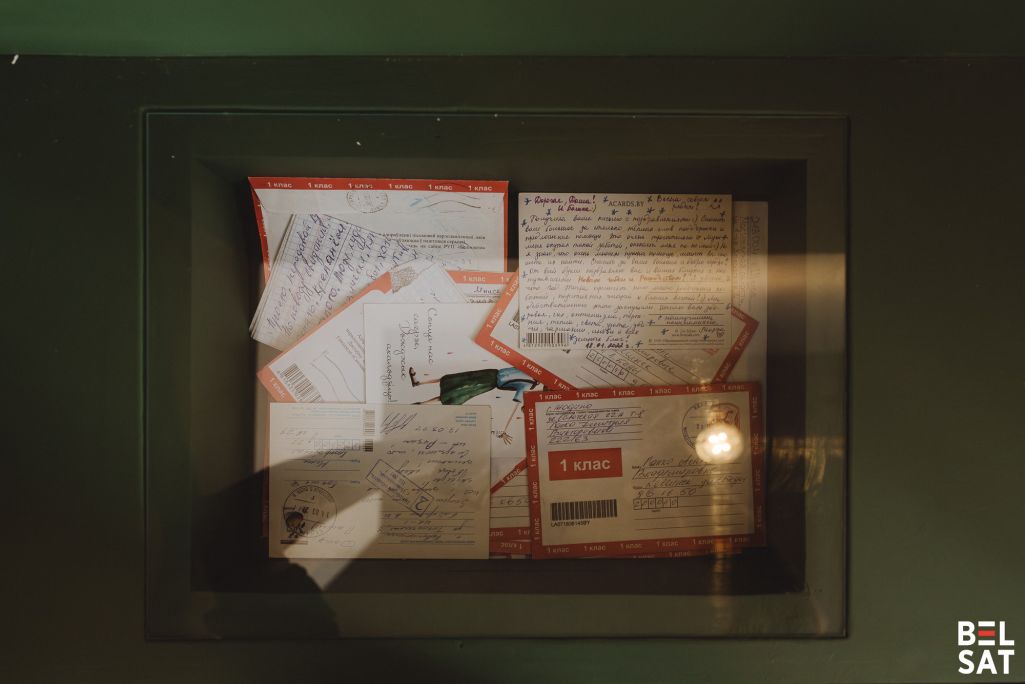
It was included in the official program of the 4th Conference of Belarusians of the World, and among its visitors were Belsat journalists.
The exhibition of Belarusian political prisoners’ belongings is on display at the Museum of Free Belarus (ul. Foksal 11). On the third day of the Conference of Belarusians of the World, May 25, visitors were welcomed from noon onward. Guests were invited to explore the exhibition, and guided tours were available upon request.
Belsat journalists visited the show and spoke with the museum’s director, Natallia Zadziarkouskaya. According to her, the exhibition was titled “Nothing Particularly New” because that phrase is the one most frequently found in political prisoners’ letters.
“It struck us deeply. It testifies to the systemic injustice that Belarusians have endured for years,”
said Ms. Natallia.
To reach the exhibition, visitors pass through a corridor with dirty green walls and a worn gray floor — an interior that instantly evokes associations with a Belarusian police station or detention center. That was precisely the intention of the exhibition’s creators, among whom were 25 former political prisoners.
“A very talented young team created the exhibition,”
explains Natallia Zadziarkouskaya.
“They managed to build a narrative out of a relatively small number of objects. For example, even the light bulb wasn’t simply hung up — it was designed to seem as if it’s swaying in the wind. The corridor and the room where the exhibits are displayed resemble a prison cell. That was the artistic concept. Even the floor was made to look like the one in a Belarusian jail.”
The exhibition’s curator is Volha Klip; graphic designer — Darya Abibok; artist — Alyaksandr Adamau.
“They themselves were never imprisoned, but during the preparation process they became deeply immersed in the subject, letting it pass through them emotionally,”
added Zadziarkouskaya.

The exhibition consists of a small number of items — but all of them are authentic, real belongings that Belarusians actually brought out of prisons. The earliest exhibit dates back to 2006 — a chess piece made of bread.
“This tells us that political repression and imprisonment in our country have been going on for decades,”
says the museum director, guiding us through the exhibition.
“Here we have the personal shoes of a political prisoner. Or a malyava — a note smuggled out of the Zhodzina prison by Ivan Kupreichanka. We turned it over, since it contains Belarusian phone numbers and personal messages for relatives. The most recent exhibit that entered our collection is a release certificate belonging to Antanina Kanavalava.”
Most of the items on display are anonymous. For example, a men’s prison uniform — the name of the person who was forced to wear it cannot yet be revealed, as his family still remains in Belarus.
A women’s uniform — a pink dress with a yellow tag — belonged to Yuliya Yunitskaya, vocalist of the band Irdorath.

Former political prisoner and journalist Aleg Hruzdzilovich does not hide his name — he donated to the museum’s collection a deodorant bottle, razors, and other items he used while imprisoned in Mahiliou Colony No. 15.
“For some, these are just ordinary household things, but for him, they’re a part of his life behind bars — everything he had there. They are a testimony to how little a person possesses in imprisonment,”
says Natallia Zadziarkouskaya, the museum’s director.
Visitors can also see a watch and a water heater that belonged to political prisoner Volha Klaskouskaya — she used them while being held in Detention Center No. 1 in Minsk and later while serving her sentence in Women’s Colony No. 4 in Homel between 2020 and 2022.
The exhibition also presents drawings and letters from political prisoners, including original letters by Viktar Babaryka, Ales Pushkin, Vitold Ashurak, and others.
More belongings of political prisoners are kept in the museum’s storage.
“We are constantly searching for new artifacts and working with political prisoners. We have a permanent partner — the Association of Belarusian Political Prisoners ‘To Freedom’. They continue to bring us items. Not everything in our collection is currently on display. Some people have asked us not to show their belongings until better times, as their relatives are still in Belarus,”
explains Zadziarkouskaya.
This year, the museum staff also plan to digitize part of the collection, which consists of personal belongings of political prisoners.

Visitors to the exhibition are offered both printed and audio guides, which tell in detail the stories behind the objects on display.
In the audio guide, one can hear the daily reports that political prisoners were forced to repeat many times each day while in captivity. Former prisoners can still recite these lines from memory without a single mistake:
“Surname. First name. Date of birth. Convicted under Article No.… Start of sentence. End of sentence. Registered for preventive supervision as inclined toward extremist and other destructive activities, inclined toward seizure of power and attacks on the administration, suicide, and self-harm.”
In addition, the audio accompaniment of the tour includes poems and letters sent from behind bars — yet another reminder of what continues to happen in Belarus.

Both the booklets and audio guides are available in three languages — Belarusian, Polish, and English — so that Poles and foreign visitors can also experience the exhibition.
“This exhibition is yet another opportunity to remind people of what is happening in Belarus. That’s why it’s so valuable for us when foreigners come. At the opening, there were representatives of the Polish Ministry of Foreign Affairs and the embassies of five countries,”
noted the organizers.

According to Natallia Zadziarkouskaya, there are not yet crowds of visitors at the exhibition, but people do come — those who want to understand the Belarusian situation, as well as former political prisoners, whose presence the museum staff consider especially valuable.
The exhibition is open until July 1, from 12:00 to 20:00.
Original article: belsat.eu